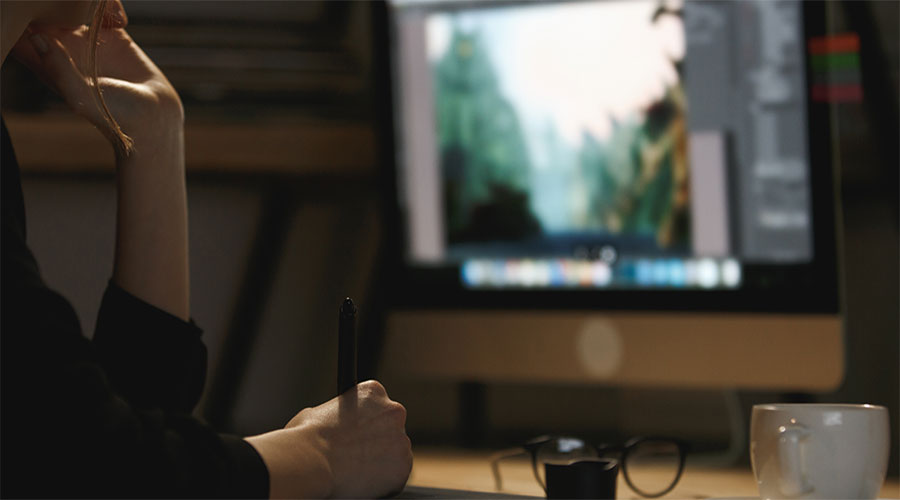A Step-by-Step Guide to Mastering Your Graphic Design Process
Originally published: March 06, 2024 09:11:13 PM, updated: March 06, 2024 09:21:10 PM

"Bad design is smoke, while good design is a mirror." - Juan-Carlos Fernandez.
To Be a Master, Master the Rules
To get good at any skill set, you have to learn the ropes laid out by those before you.
The ropes of design are no exception.
Pablo Picasso was no dummy; the man birthed the idea you must "learn the rules like a pro so that you can break them like an artist."
If you're not respecting basic design principles, your work becomes chaotic.
What might have worked for one design doesn't for the next, making your ability to produce high-quality assets inconsistent and unpredictable.
It feels "anti-artist" to say this but I'm going to; we need rules in design.
Rules serve as a map, directing the creative process in a way that ensures consistency, clarity, and impact.
Design trends change all the time.
What doesn't?
The rules.
So, become a master of the core principles of design.
There is nothing sellout about it.
Let me walk you through the essentials that have been my north star as a graphic designer, guiding me through all projects, both big and small:
- Simplicity: I've learned that the most compelling designs are often the simplest. Apple has mastered the art of simplicity (that's why everyone and their sister has an iPhone).
- Consistency x Harmony: Whether it's color, typography, or layout, I keep everything aligned. Everything has to serve a greater purpose, crafting a cohesive and memorable narrative.
- Hierarchy Guides the Eye: By playing with size, color, and placement, I can direct your attention exactly where I want it. Like a conductor in an orchestra, ensuring every note plays its part.
- Balance: Achieving balance doesn't mean everything must be symmetrical. It's about creating the right visual equilibrium, even when it surprises you. There's a sweet spot you have to toe to get it right.
- Contrast for Impact: I use contrast to make elements stand apart. Contrast is not just black versus white; it's about bold versus subtle, creating a dynamism that draws you in.
- Order: Every element on the page or asset has its place, contributing to a sense of order that makes the design as pleasing to the brain as it is to the eye.
Each of these principles isn't just a rule to follow; it's a part of a language we speak as designers.
Mastering this language has saved me countless hours and headaches, ensuring that I'm not just creating designs but crafting messages and visuals that are difficult to forget.
Planning Like a Pro

Next up, you need to develop a plan.
The first step: define what success looks like or what the end product achieves.
I'm not talking about vague ambitions.
I'm talking about pinpointing exactly what you want to achieve with your design.
Here's how I plan for every design:
- What's the End Game? I start with the big picture. What do I want my design to convey? What action do I want it to cause people to take? How do I want to make them think or feel? This question guides every decision I make in the future.
- Who's it for? Understanding the design's targeted audience down to their socks means I can tailor every color, line, and letter to what resonates with them.
- What's the Message? Every design tells a story. My graphic has to be a story worth listening to, clear and unmistakable in its intent.
- Stand Out, Don't Blend in. In a sea of designs, you have to make bold moves to stand out. What unique twist can my design experience and sensibilities bring to the table that nobody else can?
With answers to these questions, we're ready to start playing with your ideas for the design.
If you're not careful, this part of the process can be time-consuming.
Every designer's arch nemesis is time.
Creativity doesn't care about time.
But strict deadlines do.
So I lean on techniques that are quick, effective, and, frankly, fun:
- Swipe Files: First and foremost, I like to scour the internet by searching "latest design trends inspiration" and drawing on inspiration from other designers. The keywords here are draw on, not copy-paste. What about a certain design that catches my eye? If I have the skills to recreate it and put my creative twist on it, I add it to my swipe file of ideas.
"Whenever I find a design that I like, I add it to a design swipe file. And if I find a design that inspires me, I re-create it immediately so that it becomes part of my visual prototyping vocabulary." - Amir Khella.
- Mind Mapping: With a spider web of swipe file ideas, I start with a central concept and branch out from there, seeing what sticks and what needs to be trashed. Mind mapping is a visual process. It's fast, and sometimes, it connects new creative dots in ways I hadn't considered at the onset.
- The 'What If' Game: I challenge every idea with "What if?" What if it was bigger, smaller, red, or upside-down? This game pushes boundaries and uncovers gems. Sometimes, I get a ludicrous idea (seemingly out of nowhere) to use a shade of yellow I've never used before, and boom; magic happens.
By asking the right questions and applying no-time-wasted brainstorming techniques, you can set a strong foundation for your projects.
Being deliberate with every step you take, from conception to completion, keeps the ball rolling perfectly.
Getting Down to Business: Execution
As a designer, I've refined not just how I work but when.
I want to lay that out for you here.
Also, in the event you're being paid to create a design, I want to touch on how to handle client feedback so they can't take the wind out of your sails.
Optimizing Your Schedule for Peak Creativity
Not all, but for most of us, creative energy peaks in the early hours.
Knowing this, schedule design-heavy tasks in the morning.
Energy ebbs and flows throughout the day, so if you align your more creative tasks with your natural productivity rhythms, you ensure you're doing the right work at the right time.
Leave the work you find the easiest to tackle for the latter part of the day when you don't need much computing power going on between the ears.
Dealing with Feedback and Revisions

Client feedback is inevitable, but not all of it comes neatly packaged.
You might have encountered vague comments from clients in the past, like "This doesn't pop," or tough but valid criticisms such as "It's good, but it's not really what I was looking for."
Here's how to navigate these waters:
- Vague Feedback: When a client says, "make it pop," ask for examples of work they feel 'pops.' This clarifies their expectations without guesswork. It turns "I'll know it when I see it" into a conversation about color, contrast, or typography.
- Tough but Valid Criticisms: Facing a "this didn't meet my expectations" comment (or something similar), review the project's objectives with the client. So long as you've remained on target, this ensures you're both aligned on what was requested and often reveals areas where the creative brief may need adjustment or clarification.
Maintaining Emotional Equilibrium
Dealing with feedback can be challenging, especially when it feels personal or misses the mark.
I've learned to take a step back, reminding myself that each project is a chance to get better at my craft.
Feedback, even when hard to swallow, is aimed at refining the design to meet the project's goals better.
Taking a moment before responding allows you to approach revisions clearly, focusing on the project rather than the emotion.
By strategically planning your day around your energy levels, engaging in clear, constructive dialogue around feedback, and maintaining a balanced perspective on criticisms, you can navigate the execution phase of design projects with confidence and efficiency.
This approach has improved my work and deepened my professional relationships, turning challenges into opportunities for growth and learning.
Showcasing the End Product
It seems counterintuitive to say this as someone who calls themselves a designer, but presenting the design itself is one of my favorite stages in the process.
Showcasing the strategic depth of the design strengthens the client's connection to the work you produce for them, making a powerful first impression.
By providing the reasoning behind your design choices, the client has the awareness around why they love what you've created for them.
This approach underscores the value of design as a strategic tool, not just an art form.
So, when you present your work, be able to explain your color choices.
For example, "I chose blue for its calming effect, aligning with your brand's soothing vibe."
Share why specific fonts were selected, like, "This serif font adds credibility and tradition, reflecting your brand's values."
The more you (and they) understand the reasoning behind the design choices you made, the more impact the graphic will have on the page, material, or screen.
Take it the Whole Nine Yards
One of my favorite designer quips is, "Under promise, over deliver."
Underpromising doesn't create unnecessary pressure straight out of the gate.
Overdelivering makes a memorable impression and one happy recipient.
To over-deliver, narrow in on the finest details as you near the finish line.
This includes:
- Mockups: Present designs in context. Use mockups that show your design in real-world applications, like on a website, billboard, or product packaging.
- Clear File Organization:
- Name files logically.
- Include a brief legend that explains each file's purpose.
- Walkthrough Video: Offer a short Loom video walkthrough of the design, highlighting key elements and explaining the rationale behind them. You'll be amazed how much time a 5 minute walkthrough video will save you.
Put Your Mastery into Practice

Look at that; now it's your turn.
I challenge you to take these steps into all your future graphic design projects.
Remember, knowing the rules isn't about restrictions; it's about foundation.
Work efficiently, making every decision purposefully, and aim to leave a lasting impact.
Let's not just create; let's innovate, resonate, and elevate our designs to speak louder than words.
Your next project is your next masterpiece.
Let's get to work.
Join over 130,000 SEO and Google Ads experts. We provide a community to help you engage and learn from industry experts and influencers. Join Now
What if your entire business could run itself — and your work hours got shorter?